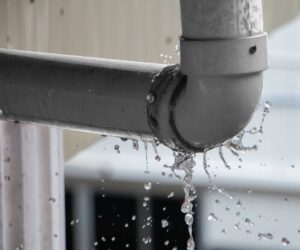Water Damage can be a costly situation. It can result in many different losses, including the rotting of wood and the growth of bacteria and mold. Luckily, there are ways to estimate the damage and get it repaired. The first step is to identify the type of water damage you are dealing with. This will help you estimate how much it will cost to fix it.

The first step to dealing with water damage in your home is to identify the type of water that has caused the problem. This is important because different categories of water damage have different levels of risk. For instance, category one water damage is relatively harmless and will not pose a health risk. However, if you have water damage in Category 2, you should take extra precautions. This type of water contains bacteria, grease, oil, and even urine.
Water that falls under category two is contaminated and poses significant health risks. It may contain raw sewage, chemicals, heavy metals, toxic organic substances, and pathogenic agents. If you suspect this kind of water damage in your home, you should call a professional to assess the extent of the damage. However, you should not attempt to clean up this kind of water yourself. In some cases, the water may contain mold, fungi, bacteria, or viruses.
Category one water damage is generally caused by broken pipes or water supply lines. It is generally easier to clean up and poses minimal health risks. Nonetheless, it can damage your kitchen or bathroom and can lead to mold growth. For the best results, call a professional for help identifying the cause of the water leak and removing it.
Category two water damage is water that is contaminated with sewage or grey water. This type of water is not edible, but it can make people sick if they ingest it. To address this type of water damage, you will need to follow the same water mitigation strategies that apply to category one water damage. Afterward, you should decontaminate the contaminated items to avoid harmful bacteria or chemicals from affecting your health.
If you discover a flood of category three water, you will need to contact a professional immediately. The damage is much worse when the water is Category 3. However, the sooner you act, the better. For example, it’s better to call a professional if you suspect it’s black water.
If the damage is not treated quickly, you may have to deal with class two water damage. In this case, water can seep up more than 12 inches up the walls and require more extensive repairs. A broken sprinkler or a burst pipe can cause water damage to an entire building. Even if it’s only a small area, it can have a devastating effect on your home’s structural integrity and health.
Once you know what type of water damage your home has, you can proceed with the cleanup and the restoration process. You should call a professional restoration company immediately to assess the damage. A reputable restoration company will be able to respond quickly, which will help you get your home back to normal. As soon as possible, you should move the affected items to a dry area. Doing so will prevent the growth of mold in the affected items.
Insurance companies often ignore category three water damage. They do this because it makes the claim adjustment process easier for everyone involved. It also keeps insurance agents, brokers, and policyholders happy. And happy customers are good for business. Nonetheless, technically excluded claims do not mean that the insurer will deny your claim.
When you are trying to estimate the cost of repairing water damage in your home, there are several factors to consider. First, you need to determine the type of damage you’ve experienced. This will help you determine the level of service needed. In addition, you’ll need to consider the additional damages that may have been caused by the water damage. These additional costs will affect the cost of the project.
Water damage is an expensive problem to deal with. It can range anywhere from a few hundred dollars to tens of thousands of dollars, depending on the extent of the damage. The best course of action is to contact a restoration company as soon as possible. Make sure to document the damage as much as possible so you can make a successful insurance claim.
